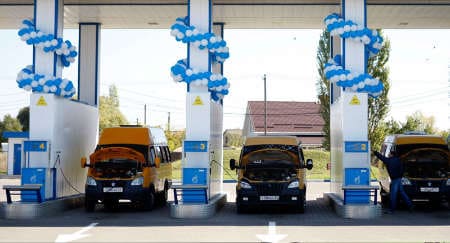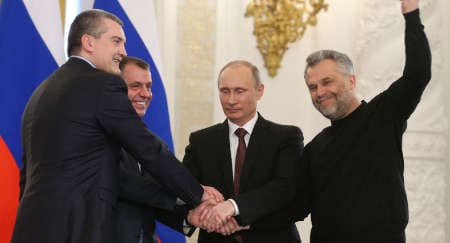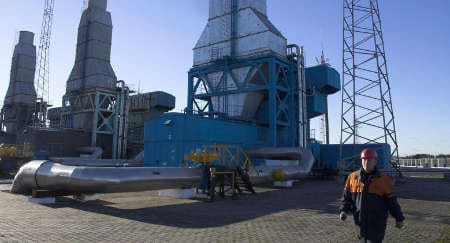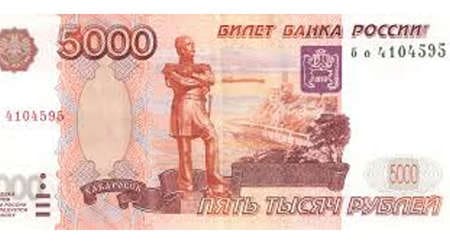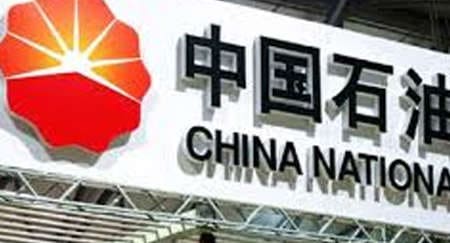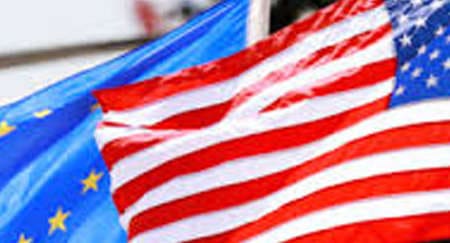Transatlantic energy security and the Ukraine-crisis: A blessing in disguise?
In the wake of the Ukraine-crisis, Europe may face yet another cut-off of gas supplies from Russia. Gazprom still meets more than half of Ukraine’s gas demand and supplies close to a third of Europe’s imports, roughly half of which, 82 billion cubic meters (bcm), went through Ukraine in 2013. In March, Gazprom drastically increased prices for Ukraine and threatened to shut down supplies in case of non-payment in a letter addressed to 18 European leaders, while Ukraine is facing a serious liquidity crisis that cripples its ability to pay its gas bills.
Ukraine-crises
Preparations within the European Union (EU) and in the context of the G7 have begun in earnest to get ready for various contingencies especially in the winter of 2014/15 and – by the words of UK energy secretary Ed Davey - to start “a process of disarmament to prevent energy being used as a weapon in the future”.
Moscow’s annexation of Crimea and its actions in Ukraine question the sustainability and indeed the very concept of mutual energy security - the foundations of which go back to the Cold War. EU member states’ reliance on and exposure to Russia on energy supplies has critical national security implications. The renewed disputes over gas pricing and transit recalled the spectre of the 2006 and 2009 Russo-Ukrainian gas crises, yet again showcasing Russia as an unreliable supplier and as a state that is ready and willing to use energy as a weapon.
Consequently, there is an increasing realisation among European Union and NATO member states that ‘business as usual’ cannot continue. Moscow’s resort to force implies to consumers that they may be wise to take active steps to further diversify their gas supplies and drastically reduce their exposure to Russia.
Indeed, at its meeting in late March 2014, the European Council concluded that efforts to reduce Europe's high gas energy dependency rates should be intensified and asked the European Commission to conduct an in-depth study of EU energy security and a comprehensive plan for the reduction of EU energy dependence to be presented by June 2014.
A short-term shock
Who stands to lose most if energy again becomes a weapon that is used in the ongoing standoff over Ukraine? In the short-term it is clearly the European Union and especially its vulnerable member states in Central and Southeast Europe and the Baltics. Despite major progress in integrating these countries into the EU’s emerging single energy market and interconnect them with each other, their dependence on Russia on gas supplies is still substantial.
According to the Regional Centre for Energy Policy Research, in case of a hypothetical complete cut-off to Europe in January 2015 for a month - that includes not only the Ukrainian transit route but also the Yamal pipeline through Belorussia and Nordstream, the direct gas link to Germany - only 77% of the average demand would be served in Central and Eastern European countries and average gas prices will go up by 37%.
In case of a hypothetical 12 month embargo up to March 2015, during which Russia reduces its supplies by 30%, a 31% price increase would result, with roughly half of the gas demand unmet, with clearly catastrophic economic consequences. Western European countries are much less exposed, at least in terms of physical security of supply, as they have a diversified, liquid natural gas market with the ability of bringing in additional supplies from Norway, North Africa and via liquefied natural gas through the numerous regasification terminals with spare capacities. Still, the price increase would be substantial even in Western Europe, adding to the existing concerns over the yawning gap between gas prices either side of the Atlantic.
Russian weaknesses
Despite the EU’s renewed zeal to address its dependency on imported gas from Russia, it is difficult to imagine a scenario where Russia will not remain Europe’s gas supplier for the foreseeable future. Europe cannot completely replace 150–160 billion cubic meters of Russian gas in the coming years. Yet in the medium- to long-term, it is Russia that is more vulnerable.
Despite Europe’s short-term exigencies described above, it is striking, how Russia’s ability of applying political and commercial pressure has already diminished since the 2009 Russian-Ukrainian gas crisis. Gazprom has to compete with other suppliers on an increasingly liquid and integrated European gas market that applies competition rules vigorously. Some 53% of Russia’s budget revenues come from fossil fuel exports, especially oil. Fossil fuel accounts for 72% of its exports. Gas exports to OECD Europe account for about 5% of the Russian GDP. Gazprom generates around 55% of its revenues from gas sales to the European Union.
There are three critical vulnerabilities that are particularly worrying from Moscow’s perspective:
1. The Ukraine crisis could prompt a general re-evaluation of the role of natural gas in Europe’s energy mix in general and will very likely generate a reserved if not outright hostile approach towards Russian natural gas. The combination of these two developments may in the medium-term result in a diminished demand for Russian gas that will deliver a blow to Gazprom’s and the Russian state’s finances, including key figures within President Putin’s inner circle.
2. As an answer to Europe’s declared intention to diversify away from Russian gas, Moscow is banging the drums on its own diversification strategy towards the rapidly growing Asian markets. Indeed, a long elusive but recently concluded deal between Chinese CNPC and Gazprom proves that point.
Yet one should not discount the detrimental effects to Russia’s image as a reliable supplier in Asia if there is a third cut-off in supplies to Europe. China in particular is very sensitive to reliable energy supplies and their economic and national security implications, and will certainly limit its gas partnership with Russia should it deem Moscow too unpredictable.Furthermore, despite Russian posturing, Moscow’s increasing focus on Asia is unlikely to become a primary concern for European gas-supply security. Russia will not be in a position to play Asia against Europe.
Moscow’s pursuit of an ’Eastern export policy’ is hampered by a whole range of factors, including the lack of physical interconnection between the Western Siberian gas fields supplying Europe and the Asian markets, China’s resistance to Russian attempts to utilise these fields instead of under-developed East Siberian fields, and different price levels.
China also has access to gas from other sources, including Central Asia, Myanmar (Burma), and LNG (liquid natural gas) shipments primarily from the Middle East, and prospectively from Australia, East Africa, Canada and even the United States. Russia is being squeezed between two buyers in improving positions: an increasingly integrated European gas market on one side and a fast-growing Chinese and Asian market on the other, both with multiple supply options, in terms of forms and sources of energy.
3. While gas is in the spotlight for most of the time, oil plays a much more important role in Russia’s economy and Moscow is vulnerable on that front too. Russia badly needs Western technology to maintain its oil production by tapping into its own conventional and unconventional reserves, tight oil (or shale oil) in particular. As Moscow is actively looking into its own tight oil formations to maintain oil production and control increasing costs in partnership with Western international oil companies (IOCs), a tighter sanctions regime against Russian companies and Rosneft in particular could be a serious blow in the medium-term.
How this triangular relationship will play out between IOCs with investments in Russia pushing back on sanctions, Western governments contemplating further sanctions and key Russian players (Rosneft in particular) in need of Western know-how is critical to the sustainability of Russia’s petro-economy in the medium- and long-term.
Transatlantic dilemmas
The Ukraine-crisis will help Europe confront its energy security challenges and may bring closer the transatlantic alliance on energy security. But there are three strategic dilemmas that the transatlantic partners will need to respond to in the coming years.
1. It is worth recalling that the Ukraine-crisis occurs at a time when the European Union - similar to other major global consumers with the notable exception of the United States – is struggling with increasing fossil fuel import dependence and huge import bills. Parallel to a push for increased usage of renewables and energy efficiency, Europe will need to consider its own indigenous unconventional gas potential. While it is unlikely that Europe will be able to replicate the American unconventional revolution, unconventional gas production may potentially offset the declining conventional production on the continent.
2. Diversifying away from Russia is within grasp but will come at a security premium. The EU is in a good position to access external gas supplies, as it is surrounded by major producing regions. At the same time virtually all existing and prospective external gas supply sources and routes are fraught with political and hard security risks the EU and NATO will have to be acutely aware of and grapple with for decades to come. This will require a strategic rethinking of co-operation and burden sharing on issues such as energy intelligence gathering and analysis, critical energy infrastructure protection inside and outside EU and Alliance territory, cybersecurity and strategic energy relations with partner countries.
3. The United States cannot directly help Europe with gas supplies in the short term. First shipments of US LNG will not come online until 2016 with larger quantities to follow only after 2018. But in the medium-term allowing unrestricted US LNG exports to Europe would be a great contribution to overall efforts to increase the energy security of European allies, even if the EU should be conservative about how much actual US gas will end up in Europe. The price points in Asian markets are currently far more attractive and will likely remain the preferred destination for US gas exports. But by increasing liquidity on the global LNG markets, the United States could further improve the negotiating power of European buyers, especially those in Central Europe and the Baltic. And this would also have the symbolic value of promoting open and transparent global energy markets versus resource nationalism and protectionism.
A new chapter
The Ukraine-crisis may herald a new chapter in transatlantic energy strategies and prove to be a reverse ‘Arab Oil Embargo’ moment in the energy history of the transatlantic alliance. The 1973 embargo was to a large degree responsible for turning the EU towards Russia as an external energy supplier despite the Cold War and for prompting the United States to promote restrictive energy trade policies.
There are strong indications that there is a fundamental shift within the European Union and in the United States in terms of their assessment on their energy relationship with Russia going forward, parallel to a rethinking of energy strategies on both sides of the Atlantic as well as energy’s role within the transatlantic relationship. The Allies are in a good position to come out on top of the current crisis, provided that they persist in standing up to Russian belligerence and commit political will and resources to build a reinforced transatlantic energy alliance. The implications will go beyond the Allies and Russia. And they will help to promote an open and transparent global energy governance and trade system.

